Autumn is a magnificent season when we can admire the foliage of trees ablaze with colour. It’s also a time to enjoy lovely autumn walks while gathering chestnuts. They are most often enjoyed warm, straight out of the oven. Why not take the opportunity to make a delicious chestnut jam? Also known as chestnut cream, this preparation is perfect for spreading on a crêpe or sweetening yoghurt. Discover how to make a delightful chestnut jam.
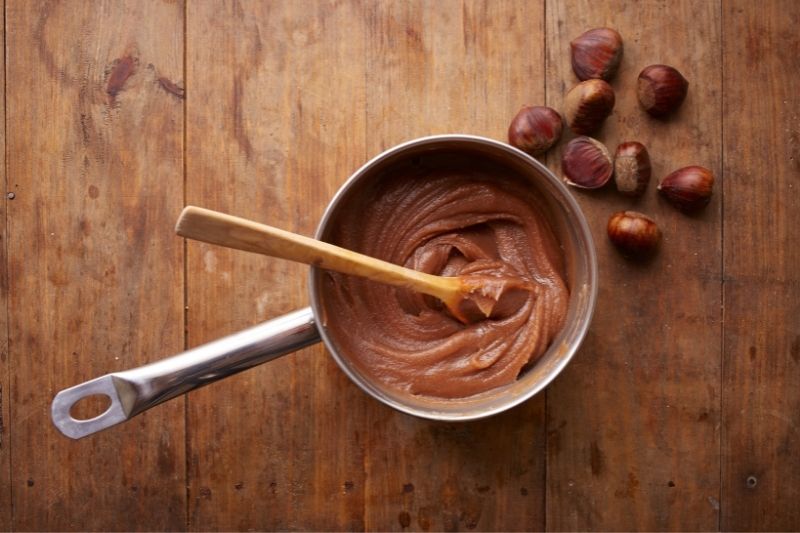
When, How, and Where to Harvest Chestnuts?
When to Harvest?
Depending on the variety and climate, the chestnut harvest begins as early as September and extends until November.
How to Harvest Chestnuts?
Watch your fingers! Chestnut burrs are covered in sharp spines, like little hedgehogs. Equip yourself with gardening gloves to avoid getting pricked. Chestnuts are usually harvested directly from the ground. The burrs open and detach from the tree once the fruit is ripe, so there’s no need to try picking them. Only collect chestnuts that are brown, shiny, hole-free, and firm. Some gardeners don’t hesitate to use a rake or a small claw to rake the ground and easily open the burrs. Since preparing chestnuts is quite laborious, it’s best to gather the largest fruits.
WARNING! Be careful not to confuse chestnuts with horse chestnuts (the fruit of the horse chestnut tree), whose seeds are toxic.
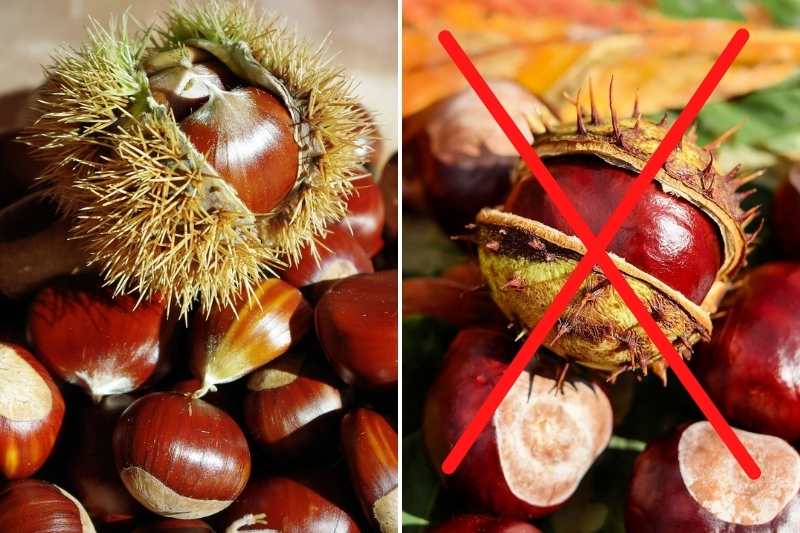
Left: chestnuts, recognisable by their spiky burrs / Right: toxic horse chestnuts from the horse chestnut tree, recognisable by their less spiky burrs
A Chestnut Tree in My Garden: Which Varieties to Choose?
- The ‘Marigoule’ Chestnut is a large tree, highly valued for its disease resistance, melliferous potential, and high productivity of large fruits. This variety is particularly suited to the southwest and Brittany.
- The ‘Marron de Lyon’ Chestnut is a tall tree, very melliferous, and has the unique feature of being self-fertile. It produces large reddish-brown fruits.
- The Common Chestnut is an imposing tree that can reach 20 to 30 meters in height. It produces shiny brown fruits.
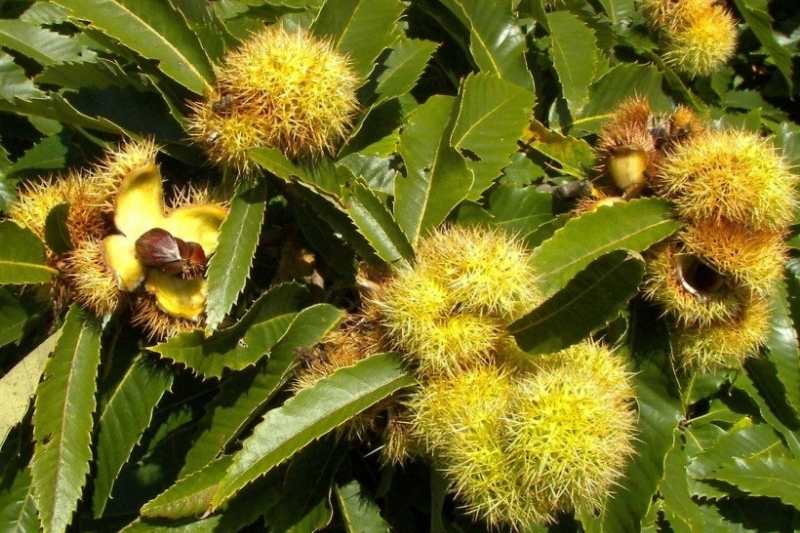
The Common Chestnut
The Chestnut Jam Recipe
Ingredients:
- 1 kilogram of chestnuts
- 1 kilogram of white sugar (also called granulated or crystallised sugar)
- 1 glass of water (25 cl)
- Optional: 1 vanilla pod
Preparation Time:
Between 1 hour 15 minutes and 2 hours
Cooking Time:
30 minutes
Recipe:
Before starting the jam, remember to sterilise your jars and lids.
1/ Begin by cleaning the chestnuts in water and removing any that float to the surface. Then, using a knife or chestnut tongs, make an incision in the hard shell of the fruit. Remove this first skin from your chestnuts.
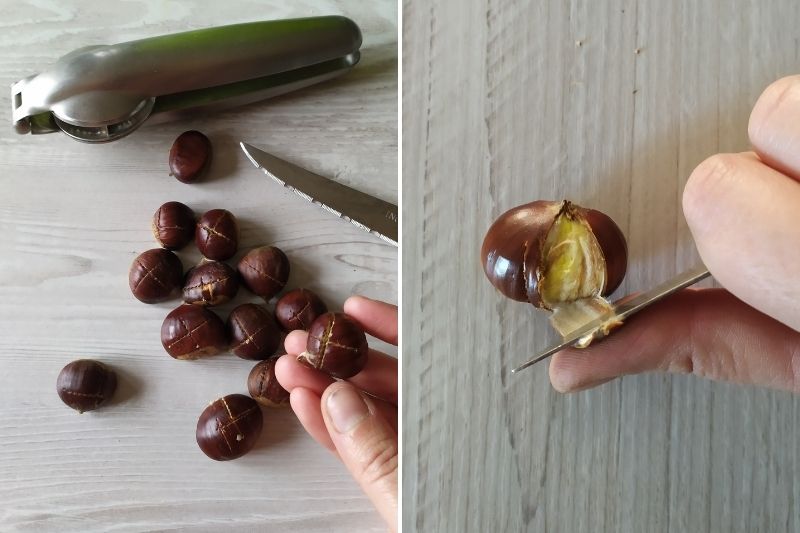
2/ Boil water in a saucepan. Plunge the chestnuts into the boiling water for 10 minutes, then drain them. Using a cloth or the tip of a knife, peel off the second skin while they are still warm.
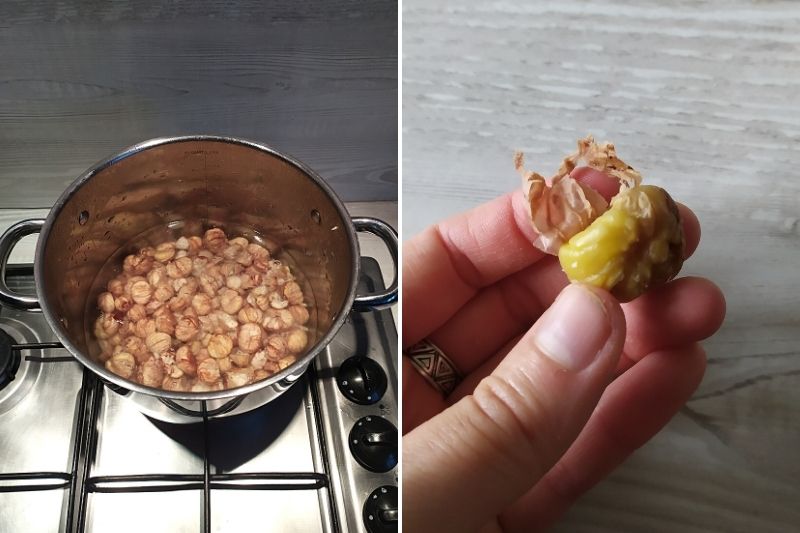
3/ Return your peeled chestnuts to the pot and cover with water. Simmer for 30 minutes from the point of boiling.
4/ Drain the chestnuts in a large colander, then blend them into a purée using a mixer.
5/ Pour the purée into a saucepan or jam pan. Add a glass of water, the sugar, and the vanilla pod split in half.
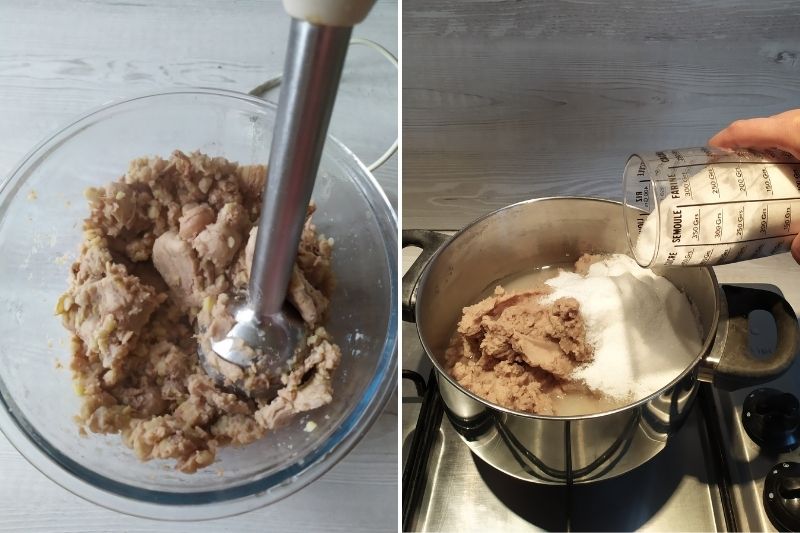
6/ Bring the mixture to a boil, then simmer gently for 20 minutes. Stir frequently with a wooden spoon. If foam forms, skim it off with a slotted spoon.
7/ After 20 minutes, check the consistency of your jam by placing a small spoonful on a cold plate. Refrigerate the plate. After 2 minutes, remove the plate and tilt it: if the jam is still too runny, cook for another 5 minutes.
8/ Once the cooking is complete, remove the vanilla pod and immediately pour the jam into a glass jar using a ladle. Fill the jar to the brim, screw on the lid, and immediately invert the jar with a cloth. Let the jars cool at room temperature before storing them.

9/ Store your jars of jam in a dark place, protected from temperature fluctuations.
10/ Once opened, keep the jar in the refrigerator.
Recipe Ideas:
You can use chestnut jam, or chestnut cream, to make cakes, flavour yoghurt, spread on pancakes or create ice cream.
The Benefits of Chestnuts:
In the past and in some regions, chestnuts were a staple food for humans as well as livestock. The chestnut tree was even nicknamed the "bread tree" or "sausage tree." Chestnuts are said to be rich in carbohydrates, vitamins, and fibre.
To Go Further:
Check out our guide to learn everything about chestnut trees: planting, pruning, and care.
































Comments